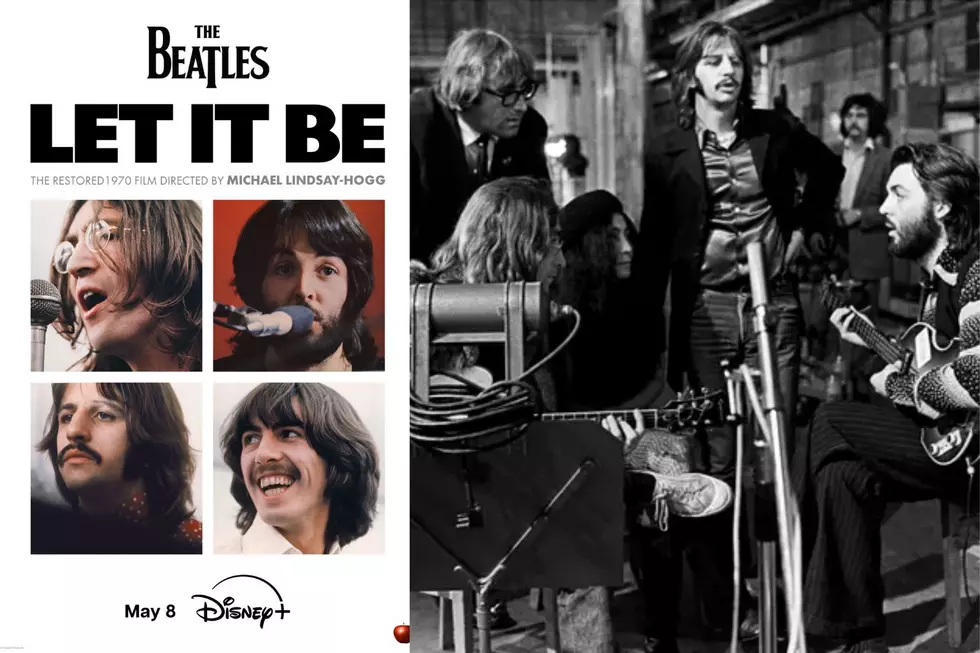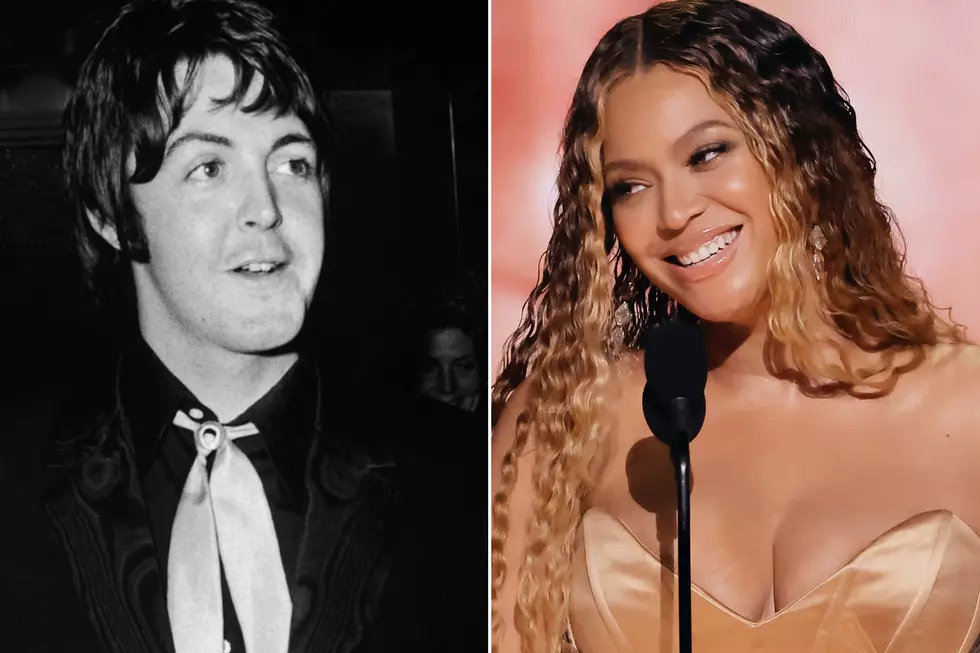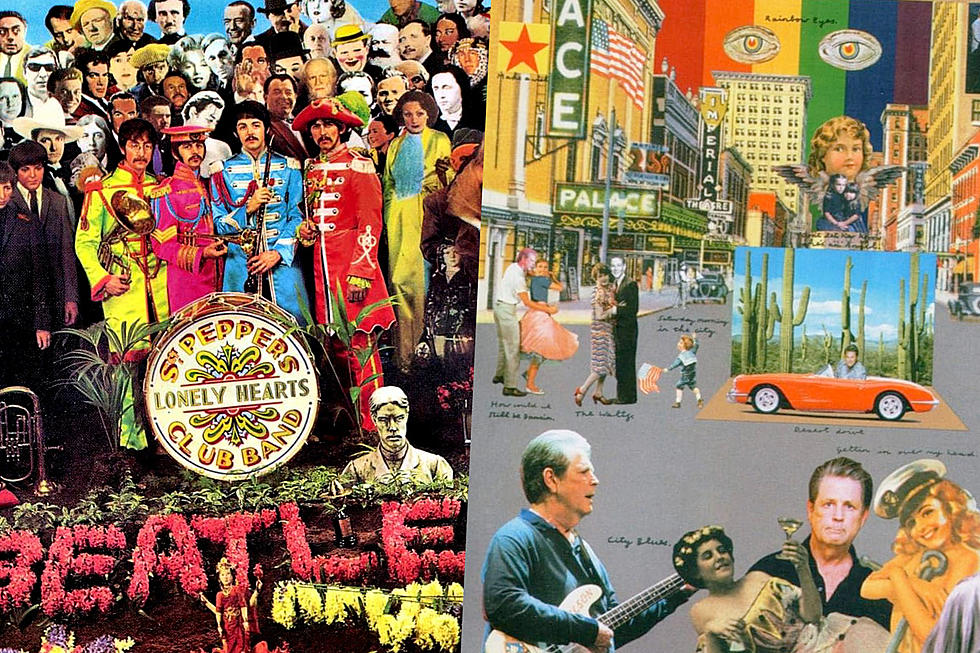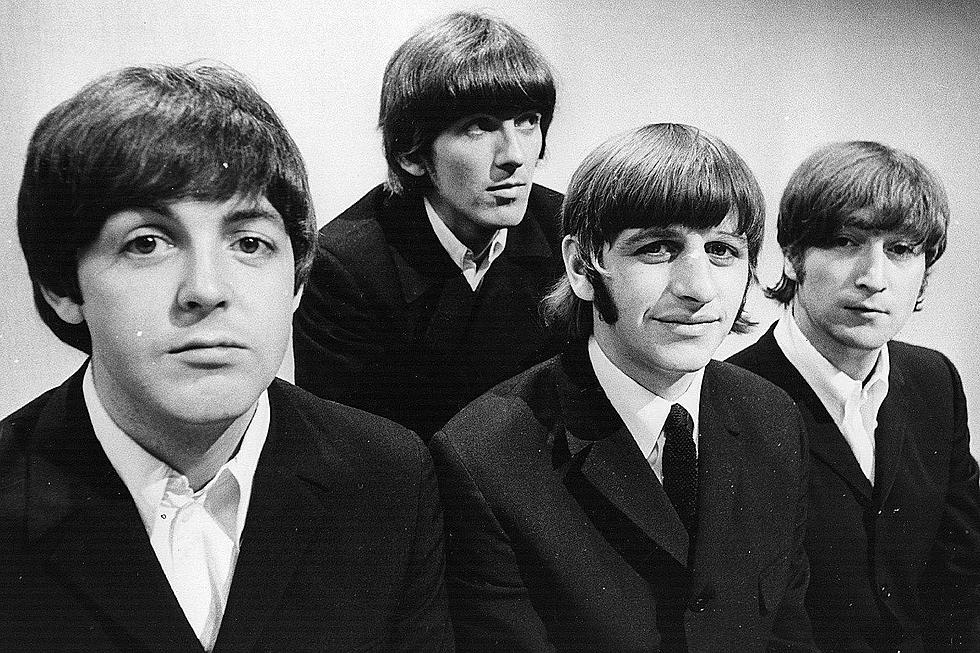
Beatles Debut New Image With ‘Strawberry Fields Forever’ and ‘Penny Lane’ Videos
In the first four years of the Beatles’ recording career, from 1962-66, the Fab Four had released more than 30 singles and an armload of LPs. They had appeared in a couple of feature films, shown up repeatedly on televised variety shows and toured relentlessly. The Beatles, it seemed, were omnipresent.
And then, in August 1966, the trail went cold. That month, the Beatles put out Revolver, released “Yellow Submarine” as a single and played what they said would be their final concert in San Francisco’s Candlestick Park. For the entirety of the fall of ’66 and the beginning of the winter of ’67, the band went quiet. No music, no movies, no concerts, no nothing.
With the band’s timeline so firmly established in the minds of millions of Beatles fans, we know now that John Lennon, Paul McCartney, George Harrison and Ringo Starr were getting more experimental in the studio as they began to create what would become Sgt. Pepper’s Lonely Hearts Club Band. But at the time, nothing was certain. While unsubstantiated break-up rumors swirled, some music fans became disenchanted with the group. You need only watch a 1967 clip from American Bandstand to see how many teenagers in the audience thought the Beatles were has-beens.
To combat this, and get some Beatles music to the public, the band’s record companies decided to line up a pair of new recordings as a double-a-sided single. In early ’67, both Parlophone and Capitol made plans to release “Penny Lane” backed with “Strawberry Fields Forever.” Because of the group’s attachment to the studio and reluctance to play live, the Beatles were directed to make film clips to accompany each song and promote the single.
Now, this wasn’t a new practice for the band. In both 1965 and ’66, the Beatles had made short film clips set to their new singles and b-sides, usually featuring the boys lip-synching and pretending to play to recordings. It was a way of getting the band on television without them actually having to travel and perform for the cameras.
Watch the Beatles' 'Strawberry Fields Forever' Video
It was the same circumstance with “Penny Lane” and “Strawberry Fields Forever,” and yet, it was also different. The British Musicians Union had become sticklers about acts who “mimed” to their records on screen, and so the band took an alternate approach. On the recommendation of Beatle buddy Klaus Voormann, the lads hired Swedish director Peter Goldman to helm the shoot. Beatles assistant Tony Bramwell served as the film producer, and the pair came up with concepts for the clips.
“I was amazed to find that there was a ban in Britain which prevented the Beatles from miming to their record,” said Goldman, who has been inspired by Richard Lester and the band’s work in A Hard Day’s Night. “So I had to find settings and ideas which were sympathetic to their songs without turning them into comic actors.”
For “Strawberry Fields,” it was determined that the promotional film would be shot in late January in Knole Park, near Sevenoaks in Kent – about 20 miles outside of London. Bramwell found the location, because of something Voormann had suggested after listening to the Lennon/McCartney tune.
“Klaus Voormann came up with the idea of a strange instrument in a tree… so I had to find a site with a suitable tree, which was Knole Park,” he recalled. “We found a piano, ripped it up, and then spent ages going up and down the tree with miles and miles of the glittery string you use to wrap Christmas presents. We didn’t have a storyline as such. We were just trying things out, like changing the speed of the camera, and running the film backwards.”
The psychedelic film experiments – like cutting from day to night and having Paul leap into the dead tree by playing the footage backwards – reflected the Beatles’ studio experimentation on the song. The strange aesthetic would provide a window into the sort of music the band was exploring on its new recordings. One of those would be “Being for the Benefit of Mr. Kite,” inspired by a poster that Lennon purchased in between takes of the “Strawberry Fields” promo.
Meanwhile, the “Penny Lane” clip took on a more nostalgic atmosphere. With the group unwilling to film at the actual Liverpool street, the musicians were filmed on London’s Angel Lane in February. Footage of the Beatles’ hometown was shot separately and edited in later. For the video’s finale, the Beatles returned to Knole Park to ride horses past their instruments, then partake in a surreal meal at a fancy table.
“The ‘Penny Lane’ one on the horses wasn’t quite that exciting for me,” Starr recalled in The Beatles Anthology. “It was a bit real!”
Watch the Beatles' 'Penny Lane' Video
During filming for both clips in Kent, the cast and crew were surrounded by a bunch of local kids who had decided to skip school to witness the shoots. A couple of then-teenage attendees, shared their memories of the shoot with Kent Live, including the lax security, the agreeable Beatles and that Lennon kept singing, “Hey, hey, we’re the Monkees.”
“I remember feeling as excited as I had ever felt, worrying a little about cutting school, but then thinking this may never happen again, so had to be done,” Trevor Nicholson, who was 12 at the time, recalled. “I think they smashed up the piano after the filming, so the schoolkids who were there swarmed over the bits to find a souvenir.”
Beatles devotees were almost as excited, and shocked, to see the band in the films when they hit the air. The twin clips made their U.S. debuts on March 11, 1967 when they were introduced by Dick Clark on American Bandstand (and subsequently shown on other, local music programs). The music had been out for a few weeks, but music fans hadn’t gotten a look at the lads in a while.
“All the Beatles look completely changed: grown men with newly flourished facial hair including handlebar mustaches and flowing black coats,” remembered NPR’s Bob Boilen. As a 13-year-old, he was struck by “Lennon’s new wire-rimmed glasses (which I’d later find the likes of at a flea market and wear).”
The way the Beatles’ appeared in the “Strawberry Fields” clip would inspire how John, Paul, George and Ringo were drawn for the animated Yellow Submarine film. The only major change was the loss of McCartney’s mustache.
But the “Penny Lane” and “Strawberry Fields Forever” promos had an impact that went far deeper than the Beatles’ cartoon movie. These short films helped prepare audiences for Pepper and rock’s embrace of psychedelia, both visual and aural. The non-narrative clips changed how bands would promote their music, leading – eventually – to the birth of the music video and MTV.
Later in 1967, the Beatles would return to Kent to film scenes for Magical Mystery Tour – a film project more infamous than the band’s celebrated “Penny Lane” and “Strawberry Fields Forever” footage.
Beatles Albums Ranked
You Think You Know the Beatles?
More From Ultimate Classic Rock









